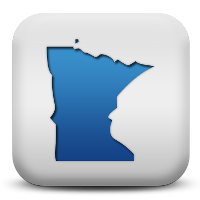Kindergarten ♦ First Grade ♦ Second Grade ♦ Third Grade ♦ Fourth Grade ♦ Fifth Grade ♦ Sixth Grade
Kindergarten Standards:
2.1.1 Students will be able to represent observations and data in order to recognize patterns in the data, the meaning of those patterns, and possible relationships between variables.
0E.2.1.1.2 Make daily and seasonal observations of local weather conditions to describe patterns over time.
First Grade Standards:
1E.2.2.1.1 Use quantitative data to identify and describe patterns in the amount of time it takes for Earth processes to occur and determine whether they occur quickly or slowly.
Second Grade Standards:
2P.1.1.1.1 Ask questions about an object’s motion based on observation that can be answered by an investigation.
2E.2.1.1.1 Represent data to describe typical weather conditions expected during a particular season.
2E.4.2.1.1 Obtain and use information from multiple sources to identify where water is found on Earth.
Third Grade Standards:
3P.1.1.1.1 Ask questions based on observations about why objects in darkness can be seen only when illuminated.
3P.1.2.1.1 Plan and conduct a controlled investigation to determine the effect of placing objects made with different materials in the path of a beam of light.
3E.2.1.1.1 Record observations of the sun, moon, and stars and use them to describe patterns that can be predicted.
Fourth Grade Standards:
4E.1.1.1.2 Ask questions about how water moves through the Earth system and identify the type of question.
4E.2.2.1.1 Interpret charts, maps and/or graphs of the amounts of salt water and fresh water in various reservoirs to provide evidence about the distribution of water on Earth.
Fifth Grade Standards:
5L.1.2.1.3 Plan and conduct an investigation to obtain evidence that plants get the materials they need for growth chiefly from air and water.
5E.2.2.1.2 Use data to describe patterns in the daily changes in length and direction of shadows, day and night, and the seasonal appearance of some stars in the night sky.
5P.3.1.1.2 Use models to describe that energy in animals’ food (used for body repair, growth, and motion and to maintain body warmth) was once energy from the Sun.
5E.4.1.1.1 Use evidence to support an argument that the apparent brightness of the Sun and stars is due to their relative distances from Earth.
Sixth Grade Standards:
6E.1.1.1.1 Ask questions that arise from observations of patterns in the movement of night sky objects to test the limitations of a solar system model.
6E.3.1.1.1 Develop and use scale models of solar system objects to describe the sizes of objects, the location of objects, and the motion of the objects; and include the role that gravity and inertia play in controlling that motion.
6E.3.1.1.2 Develop a model, based on observational evidence, to describe the cycling and movement of Earth’s rock material and the energy that drives these processes.
6E.3.1.1.3 Develop a model, based on observational and experimental evidence, to describe the cycling of water through Earth’s systems driven by energy from the Sun and the force of gravity.
